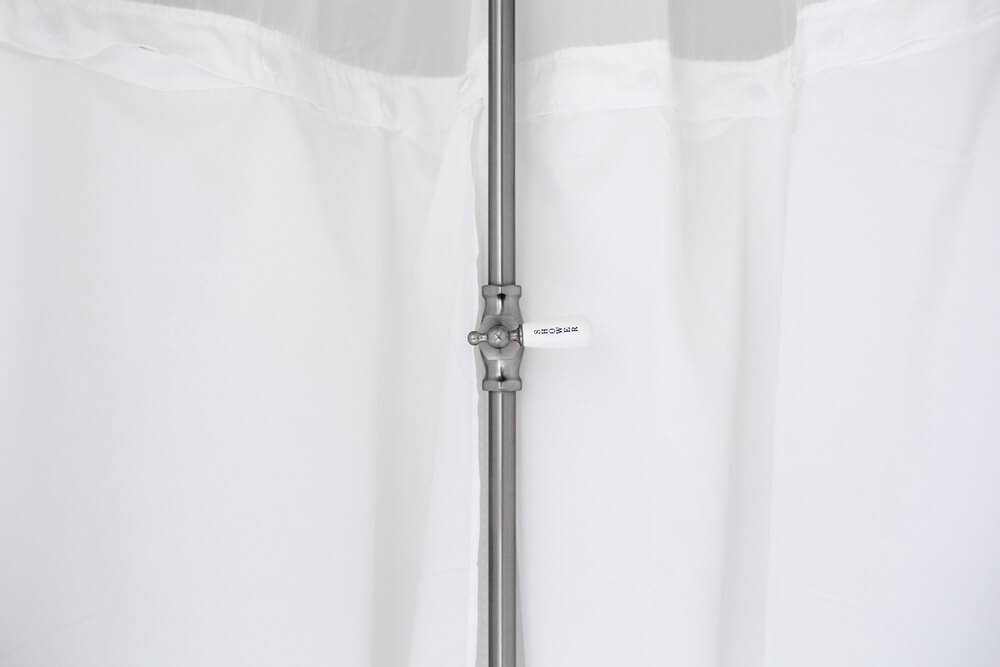Water leaks can occur for various reasons, including damaged pipes, faulty fittings, corrosion, and natural wear and tear. The first step in localizing a water leak is identifying the source. Signs of a water leak may include dampness or water stains on walls or ceilings, a sudden increase in water bills, or the sound of running water. Specialized tools such as moisture meters, thermal imaging cameras, and acoustic leak detectors can help pinpoint the exact location of the leak.
Residential properties may have different sources and causes of water leaks compared to commercial or industrial properties. For instance, common sources of water leaks in homes include faulty appliances, burst pipes, and roof leaks. Techniques for localizing water leaks in residential properties may include checking water pressure, inspecting pipes for damage, and using dye tests to detect leaks.
Commercial and industrial properties, on the other hand, may have more complex plumbing systems and a higher volume of water usage. This makes localizing water leaks more challenging, but also more critical. Techniques for localizing water leaks in commercial and industrial properties may include pressure testing, flow monitoring, and utilizing specialized equipment such as hydrostatic testing devices.
While DIY techniques can be effective in localizing water leaks, it is crucial to seek professional assistance for more severe leaks or if the source is unclear. Professional water leak detection services have the expertise and equipment to detect and repair water leaks quickly and efficiently, preventing further damage and minimizing costs.
Lastly, preventative measures can go a long way in avoiding water leaks altogether. Regular maintenance of plumbing systems, regular inspection of appliances and fixtures, and prompt repair of any leaks detected can help prevent water leaks and prolong the lifespan of your property’s plumbing systems.
Common causes of water leaks
Water leaks can occur due to various reasons, and some of the most common causes include damaged pipes, faulty fittings, corrosion, and natural wear and tear. Pipes can get damaged due to various factors, such as soil movement, foundation settling, freezing and thawing, and construction-related vibrations. Faulty fittings, such as loose connectors or worn-out washers, can also cause water leaks. Corrosion is another leading cause of water leaks, particularly in older plumbing systems, and can occur due to the use of hard water, chemicals, or exposure to moisture. Finally, natural wear and tear of plumbing systems over time can also cause water leaks to occur. Understanding the common causes of water leaks can help you take preventative measures and detect and repair leaks promptly.
Signs of a water leak
Detecting a water leak early can prevent further damage and costly repairs. However, water leaks may not always be apparent, especially if they occur in hidden areas like behind walls or underground. Here are some common signs that may indicate a water leak:
- Water stains or dampness on walls, floors, or ceilings.
- Unusual odors, such as a musty or earthy smell, which can indicate mold growth.
- Sounds of running water or dripping noises.
- Decreased water pressure or flow.
- A sudden increase in your water bill.
- Wet or mushy patches in your lawn or yard.
- Visible cracks or bulges in your foundation or walls.
- A hot spot on the floor, which could indicate a hot water leak.
If you notice any of these signs, it’s crucial to take action promptly to detect and repair the water leak to prevent further damage.
Tools and equipment for detecting water leaks
There are several tools and equipment available for detecting water leaks, ranging from simple DIY solutions to specialized professional equipment. Here are some commonly used tools and equipment:
- Moisture meters: These devices can detect moisture levels in various materials, such as walls, floors, and ceilings, to identify areas where water may be present.
- Acoustic leak detectors: These devices use sound waves to locate leaks in pipes and fittings by detecting changes in pressure or vibration.
- Thermal imaging cameras: These cameras detect temperature differences in materials, allowing for the identification of hot or cold spots that may indicate water leaks.
- Dye tests: These tests involve adding dye to the water supply to identify leaks in pipes and fittings.
- Pressure testing equipment: These devices can test the pressure of the water supply to detect leaks in pipes and fittings.
- Hydrostatic testing devices: These devices use water pressure to test the integrity of pipes and fittings, allowing for the identification of leaks.
While some of these tools and equipment can be used by DIY enthusiasts, professional water leak detection services often utilize specialized and more advanced equipment to detect and repair water leaks efficiently.
Techniques for localizing water leaks in residential properties
Residential properties may have different sources and causes of water leaks compared to commercial or industrial properties. Here are some techniques for localizing water leaks in residential properties:
- Check water pressure: Low water pressure may indicate a water leak, so it’s essential to check the water pressure regularly. You can use a pressure gauge to check the water pressure in your home and compare it to the recommended pressure range.
- Inspect pipes for damage: Inspect your pipes regularly for signs of damage, such as cracks, corrosion, or loose fittings. This can be done visually or using specialized equipment, such as a borescope or a pipe camera.
- Use dye tests: Dye tests involve adding dye to the water supply to detect leaks in pipes and fittings. This is a simple DIY solution that can help identify the location of the leak.
- Check appliances: Faulty appliances, such as washing machines or water heaters, can also cause water leaks. Inspect these appliances regularly for signs of wear and tear and replace any faulty parts promptly.
- Inspect roofs and gutters: Roofs and gutters can also be a common source of water leaks in residential properties. Inspect these areas regularly for signs of damage or wear and tear, such as cracks or missing shingles.
- Check for mold growth: Mold growth can indicate the presence of a water leak, as mold thrives in damp conditions. Regularly inspect your home for signs of mold growth, such as musty smells or visible mold on walls or ceilings.
If you suspect a water leak in your residential property, it’s essential to take action promptly to detect and repair the leak to prevent further damage. In some cases, it may be necessary to seek professional water leak detection services to locate and repair the leak efficiently.
Techniques for localizing water leaks in commercial properties
Commercial properties may have more complex plumbing systems and a higher volume of water usage than residential properties. This makes localizing water leaks more challenging, but also more critical. Here are some techniques for localizing water leaks in commercial properties:
- Pressure testing: Pressure testing involves pressurizing the water supply system to identify leaks. This technique can identify leaks in pipes, fittings, and valves.
- Flow monitoring: Flow monitoring involves measuring the flow rate of water to identify changes that may indicate a water leak. This technique is particularly useful for identifying leaks in larger pipes or systems.
- Thermal imaging: Thermal imaging cameras can detect temperature differences in materials, allowing for the identification of hot or cold spots that may indicate water leaks. This technique can be particularly useful for identifying leaks in heating and cooling systems.
- Acoustic leak detection: Acoustic leak detection uses sound waves to detect leaks in pipes and fittings by detecting changes in pressure or vibration. This technique can be particularly useful for identifying leaks in underground or hard-to-reach pipes.
- Hydrostatic testing: Hydrostatic testing uses water pressure to test the integrity of pipes and fittings, allowing for the identification of leaks.
Commercial properties may also benefit from regular maintenance and inspection of plumbing systems to detect and repair leaks promptly. Regular inspection of appliances and fixtures, such as water heaters and faucets, can also help prevent water leaks from occurring. Seeking professional water leak detection services can also help locate and repair leaks more efficiently.
Techniques for localizing water leaks in industrial properties
Industrial properties may have larger and more complex plumbing systems than commercial or residential properties, which can make localizing water leaks more challenging. Here are some techniques for localizing water leaks in industrial properties:
- Ultrasonic leak detection: Ultrasonic leak detection uses high-frequency sound waves to detect leaks in pipes and fittings. This technique is particularly useful for identifying leaks in high-pressure systems or hard-to-reach areas.
- Infrared thermography: Infrared thermography uses infrared cameras to detect temperature differences in materials, allowing for the identification of hot or cold spots that may indicate water leaks. This technique can be particularly useful for identifying leaks in heating and cooling systems.
- Pressure testing: Pressure testing involves pressurizing the water supply system to identify leaks. This technique can identify leaks in pipes, fittings, and valves.
- Flow monitoring: Flow monitoring involves measuring the flow rate of water to identify changes that may indicate a water leak. This technique is particularly useful for identifying leaks in larger pipes or systems.
- Visual inspection: Visual inspection involves inspecting pipes, fittings, and valves for signs of damage or wear and tear, such as corrosion or cracks.
Preventative measures, such as regular maintenance and inspection of plumbing systems, can also help prevent water leaks from occurring in industrial properties. Seeking professional water leak detection services can also help locate and repair leaks more efficiently, minimizing damage and downtime.
Importance of professional water leak detection services
Water leaks can be challenging to detect, especially if they occur in hard-to-reach areas or hidden locations like behind walls or underground. In some cases, water leaks may not be apparent until they cause significant damage to your property. This is why it’s essential to seek professional water leak detection services to locate and repair water leaks promptly. Here are some reasons why professional water leak detection services are crucial:
- Specialized equipment: Professional water leak detection services have access to specialized equipment that can detect water leaks quickly and efficiently, minimizing damage and downtime.
- Expertise: Professional water leak detection services have the expertise and training to locate and repair water leaks effectively, even in complex plumbing systems.
- Preventive measures: Professional water leak detection services can also offer preventative measures to avoid water leaks from occurring in the first place, such as regular maintenance and inspection of plumbing systems.
- Cost savings: Detecting and repairing water leaks promptly can save you money in the long run by preventing further damage and costly repairs.
In addition to the benefits mentioned above, professional water leak detection services can also offer peace of mind, knowing that your property is protected from water damage and potential health hazards such as mold growth. If you suspect a water leak in your property, don’t hesitate to seek professional water leak detection services to locate and repair the leak promptly.
Preventative measures for avoiding water leaks
Preventing water leaks is always better than having to deal with the aftermath of a leak. Here are some preventative measures you can take to avoid water leaks:
- Regular maintenance: Regular maintenance of plumbing systems, including inspection of pipes, fittings, and valves, can help identify potential problems and prevent water leaks from occurring.
- Prompt repair: Promptly repairing any leaks or damaged pipes, fittings, or valves can prevent water leaks from getting worse and causing further damage.
- Use of high-quality materials: The use of high-quality materials during construction or renovation of your property can help prevent water leaks from occurring due to corrosion, rust, or wear and tear.
- Proper insulation: Proper insulation of pipes can help prevent freezing and thawing, which can cause pipes to burst and lead to water leaks.
- Use of water leak detection systems: Water leak detection systems can detect water leaks early and notify you or a professional water leak detection service, preventing further damage.
- Proper disposal of waste: Proper disposal of waste materials, such as grease, oil, or food scraps, can prevent clogging and damage to your pipes.
Taking these preventative measures can help you avoid water leaks and prolong the lifespan of your plumbing systems, ultimately saving you money and hassle in the long run.
Source: https://przeciek24.com









